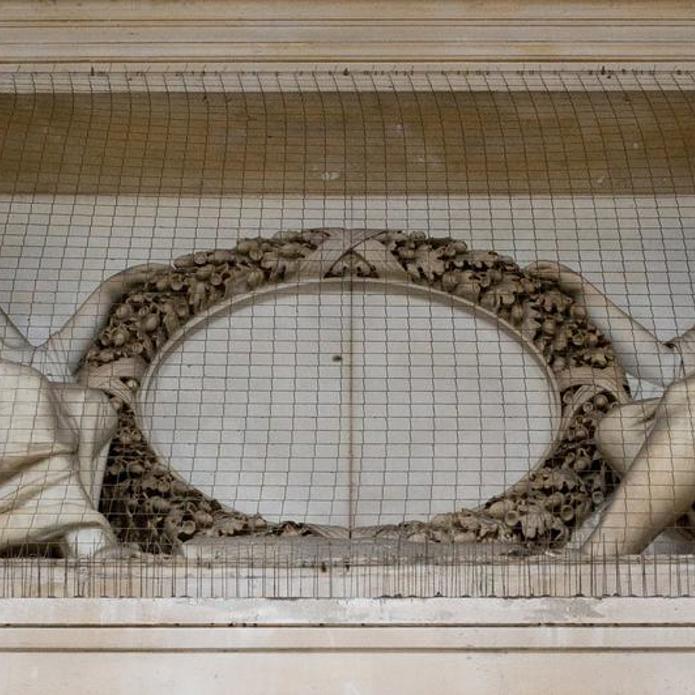John Charles Felix Rossi, 'Asia and Europe', 1826-32
About the work
Overview
The relief above the Portico Entrance was originally intended for Marble Arch, designed by John Nash in 1827 as a ceremonial entranceway. After the death of John Flaxman, who had been chosen to provide the commemorative sculpture, the work was divided between Charles Rossi, Edward Hodges Baily and Richard Westmacott, while Francis Chantrey was commissioned to produce an equestrian statue of George IV. Work started in 1827 but was halted after the death of George IV and then scaled back after 1831, when the new king, William IV, got rid of its sculptural elements in a cost-cutting exercise. Some of the unused pieces were used at Buckingham Palace, the equestrian statue ended up in Trafalgar Square, and Baily’s victory statues and Rossi’s relief were reemployed at the National Gallery.
The relief’s two young women sit on a horse and camel to represent Europe and Asia, respectively. They hold a wreath which was to have contained a bust of Wellington – but, as Wilkins thought this was too martial, it was never included.
Key facts
Details
- Full title
- Asia and Europe
- Artist
- John Charles Felix Rossi
- Artist dates
- 1762 - 1839
- Part of the group
- Central Portico Sculptures
- Date made
- 1826-32
- Medium and support
- Portland stone
- Acquisition credit
- Commissioned by the Office of Works for the Marble Arch, and installed on the Gallery by 1838
- Inventory number
- H207
- Location
- Gallery Exterior: Central Portico
- Collection
- Contextual Collection
About this record
If you know more about this painting or have spotted an error, please contact us. Please note that exhibition histories are listed from 2009 onwards. Bibliographies may not be complete; more comprehensive information is available in the National Gallery Library.
Images
About the group: Central Portico Sculptures

Overview
The dominant sculptural ornament of the National Gallery’s central portico is a relief over its entrance, representing Europe and Asia. The continents are personified by two women, one of whom sits on a horse, the other on a camel. They are flanked by a pair of winged female draped figures, standing in niches either side of the entrance. None of these sculptures were originally intended for this setting.
The central sculpture was designed by John Nash in 1827, and carved by Charles Rossi. It was supposed to adorn London’s ceremonial entranceway, the Marble Arch, but was never put up when the arch was reduced in scale and ambition to save money. When it was discovered that the government was not willing to pay for elaborate external decorations on William Wilkins’ new National Gallery, it was decided to rehouse Europe and Asia on Trafalgar Square. The two female figures, sculpted by another British neoclassical sculptor, Edward Hodges Baily, were also originally designed by Nash for the Marble Arch.




